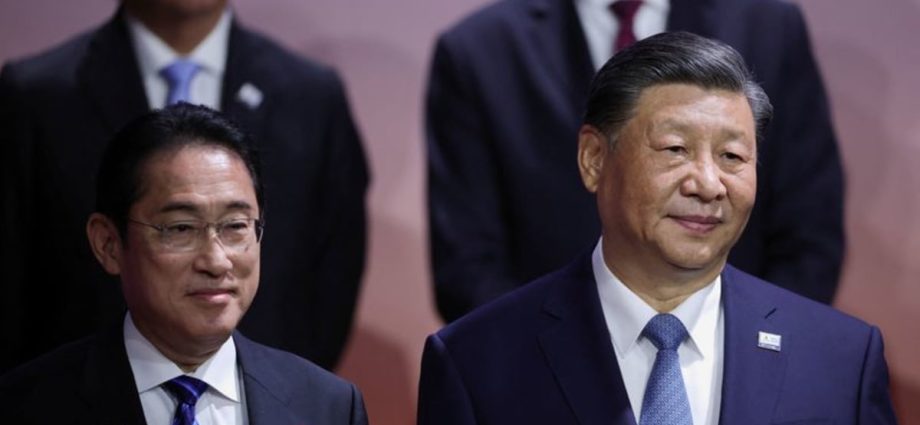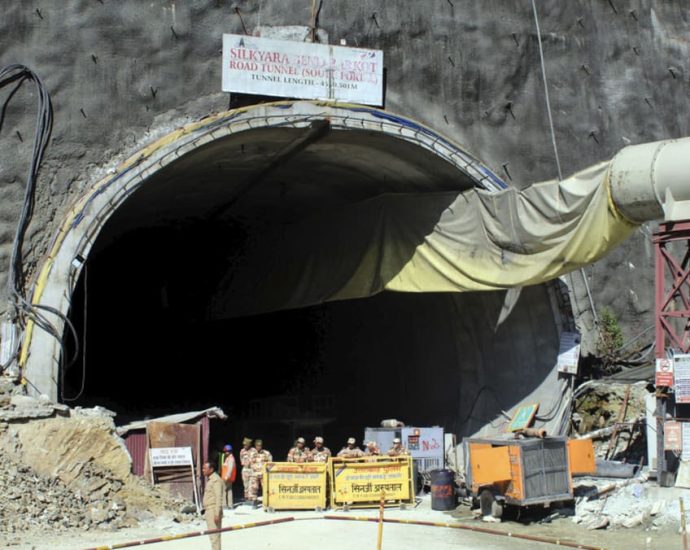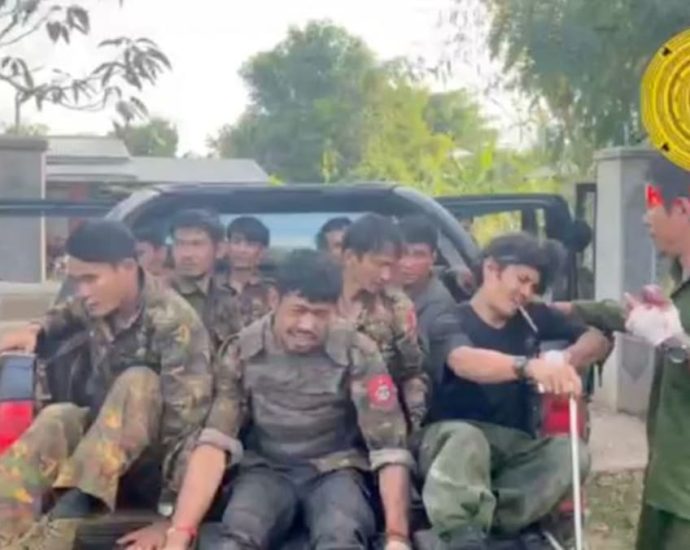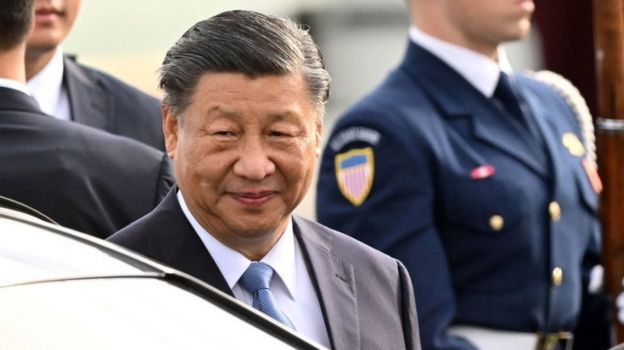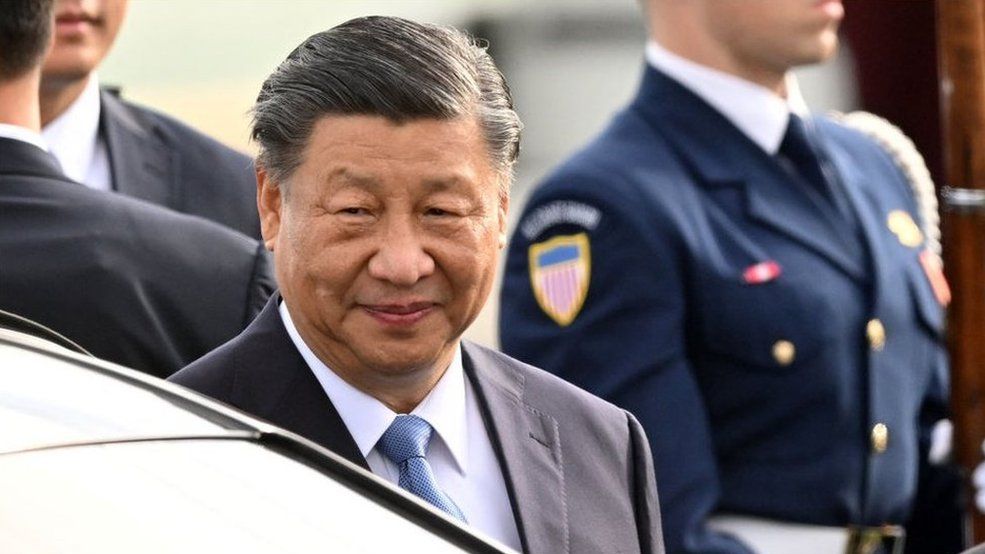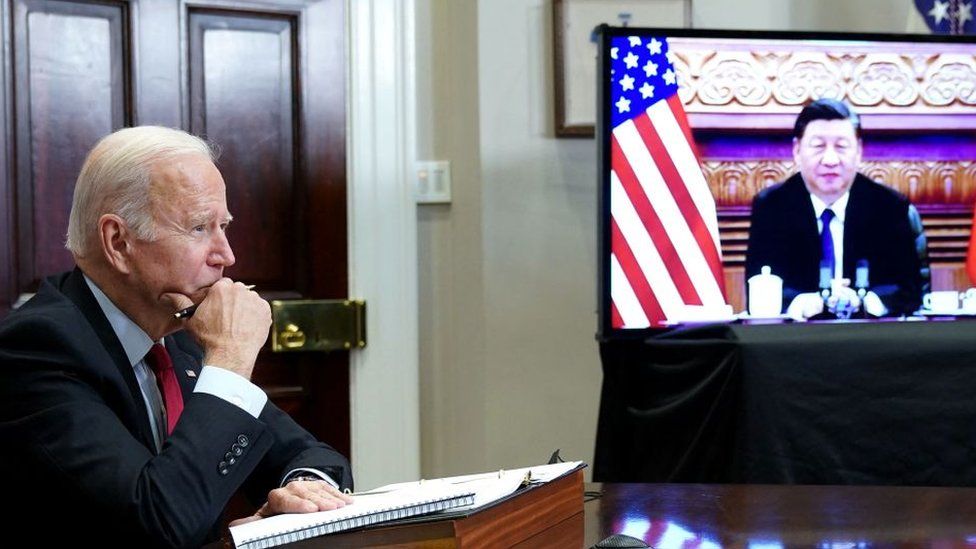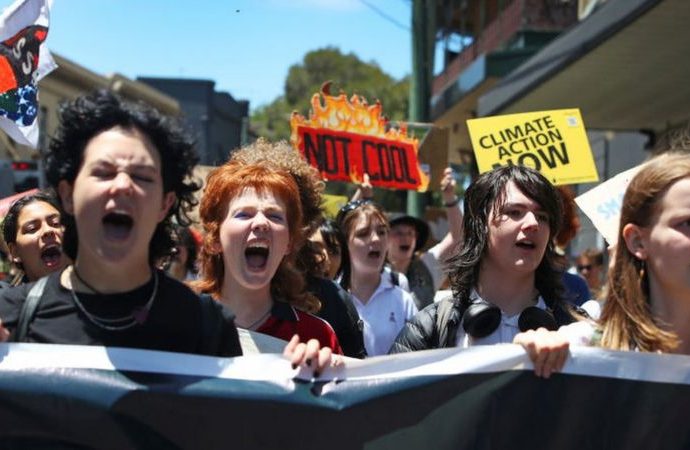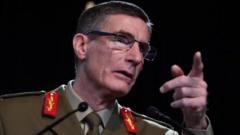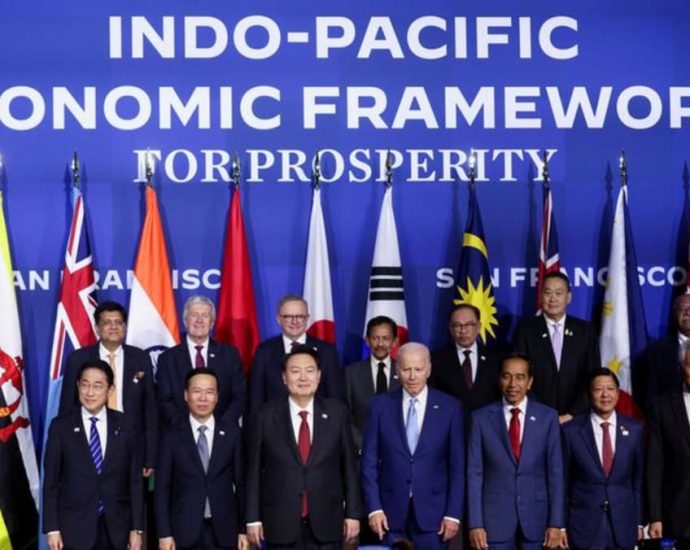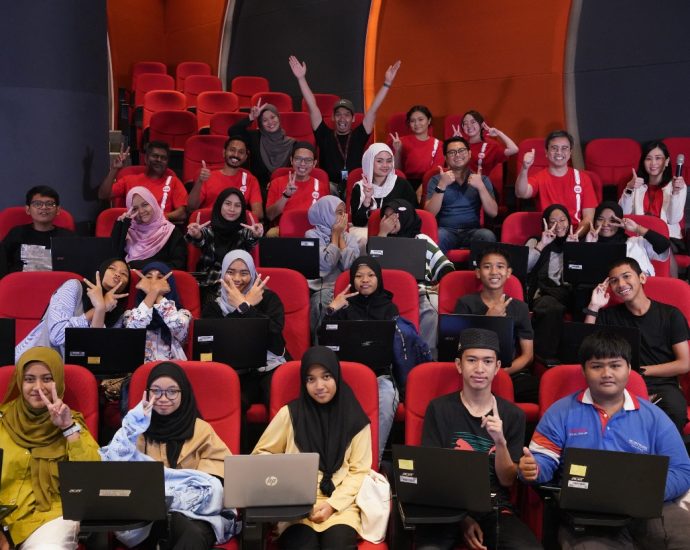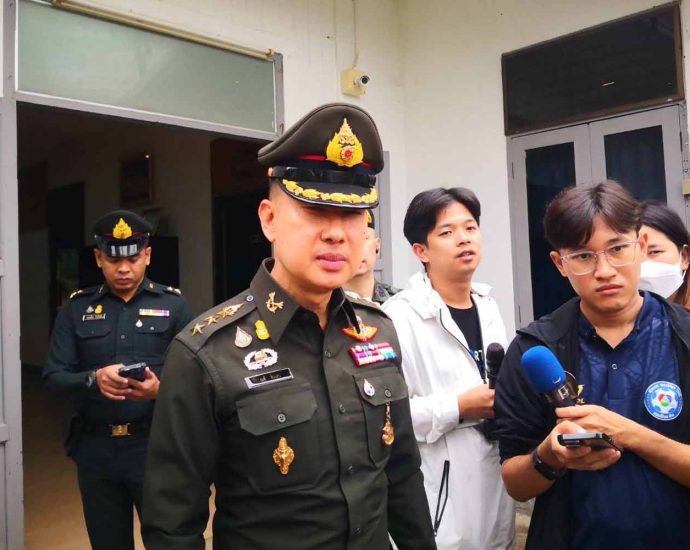China, Japan reaffirm strategic relations in rare leader talks
Most recently, ties have been tested by China’s ban on Japanese seafood following Tokyo’s decision to release treated water from its crippled Fukushima nuclear plant into the sea in August. Kishida said he had strongly urged Xi to drop the ban and also sought the swift release of the businessman,Continue Reading
Indian rescuers warn freeing trapped workers could take another 48 hours
As rescuers race to save the men, India has sought advice from the Thai company that rescued children from a flooded cave in 2018, as well as engineering experts in soil and rock mechanics at the Norwegian Geotechnical Institute. Rescuers have been communicating with the trapped men using radios. Food,Continue Reading
Myanmar military, insurgents battle over port town
Reuters could not independently verify the report and a junta spokesperson did not respond to request for comment. Pauktaw is about 500km northwest of Myanmar’s main city of Yangon. The offensive, which the insurgent alliance calls “Operation 1027” after the date it was launched, is the biggest the junta hasContinue Reading
Funeral industry encouraged to provide greater price transparency, clarity on packages

SINGAPORE: Funeral service providers are encouraged to provide greater price transparency for their products, Singapore’s competition watchdog said on Friday (Nov 17).
Among the best practices include highlighting to consumers that package prices could be subject to change if additional items are procured, added the Competition and Consumer Commission of Singapore (CCCS).
Those who seek out these services “do not generally have a good sense of how much funeral products cost”, according to findings from a market study conducted by CCCS with the support of the National Environment Agency (NEA).
“This is because consumers are unlikely to be familiar with the associated costs of arranging a funeral, given its nature and the fact that price information is not readily available,” said the study, adding that funeral packages can vary significantly in price depending on what they cover.
More than a quarter of respondents in the market study expected a funeral arrangement that includes a wake to cost less than S$1,000 (US$750). However, very few respondents – about 1 per cent – who had experience planning a funeral actually paid less than this amount.
Those polled for the survey reported spending various amounts for at-need funeral arrangements in the three years from 2018 to 2020. This ranged considerably from S$1,000 to more than S$9,000, with the median respondent paying between S$5,000 and S$8,999.
Consumers may also not know the final price at the time of engaging these services as clients are typically given the option to purchase add-ons, or to refuse or cancel certain items during the course of the funeral.
The funeral service industry can make this process clearer by being more transparent about the items included in a package, said CCCS.
Businesses can also provide consumers with a reference list of optional items not included in the package and their corresponding prices.
The study showed that arranging a funeral is “highly customisable” and may involve various add-ons, ranging from the option to embalm the deceased’s body, to the type of casket and desired religious rites. The location and duration of the wake as well as related amenities and catering are factors as well.
The commission said funeral service providers are also encouraged to issue consumers with a written copy of terms and conditions, and to provide an invoice with sufficient details about the items provided when collecting payment.
Beijing touts ‘historic’ Xi-Biden meeting
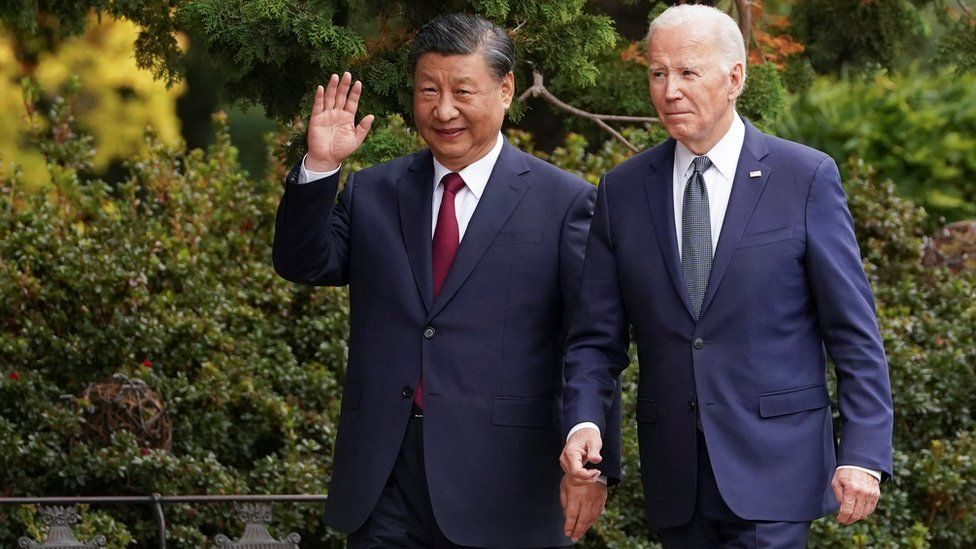 Reuters
ReutersThe picture of Xi Jinping and Joe Biden on a stroll in a Californian country estate continues headlining Chinese media a day after what Beijing has hailed as a “historic” summit.
People’s Daily, the biggest state-run newspaper, called the four-hour bilateral a “new starting point” for China-US relations.
On social media, many Chinese are calling for a “win-win” relationship.
It was the first time the two presidents had met since November 2022.
The highly anticipated meeting came after US-China relations had hit a particularly low point. The spy balloon row in February further derailed ties that had already been strained by China’s claims over Taiwan and the South China Sea, and US export bans on advanced tech.
A string of visits to Beijing by senior US officials this year sought to repair the damage – and Thursday’s meeting on the sidelines of the Asia-Pacific Economic Co-operation summit was seen as a breakthrough in itself.
There were some wins. The two sides agreed to resume military communications and work together to combat the flow of fentanyl into the US. But the sticking points remained too – from the so-called chip wars to thornier issues such as Taiwan. Towards the end of a solo press conference, Mr Biden repeated his view that Mr Xi is a dictator, while answering a question.
China’s foreign ministry called the remark “irresponsible political manipulation” but it doesn’t appear to have soured Beijing’s portrayal of the meeting.
State broadcaster China Central Television allocated almost two-thirds of its daily evening news bulletin to the Chinese president’s outing in San Francisco, with about 15 minutes devoted to the Biden-Xi meeting and another 15 minutes to Mr Xi’s speech at a gala reception with prominent American business leaders later that night.
“The meeting was positive, comprehensive and constructive… It would be a new starting point for stabilising relations between China and the US,” the presenter said, reading from the same article that had been published on People’s Daily earlier.
In an attempt to portray the meeting as putting fraught relations back on course, CCTV showed footage of Mr Xi being “warmly greeted” by his US counterpart upon his arrival at the Filoli Estate, the country house near San Francisco where they met.
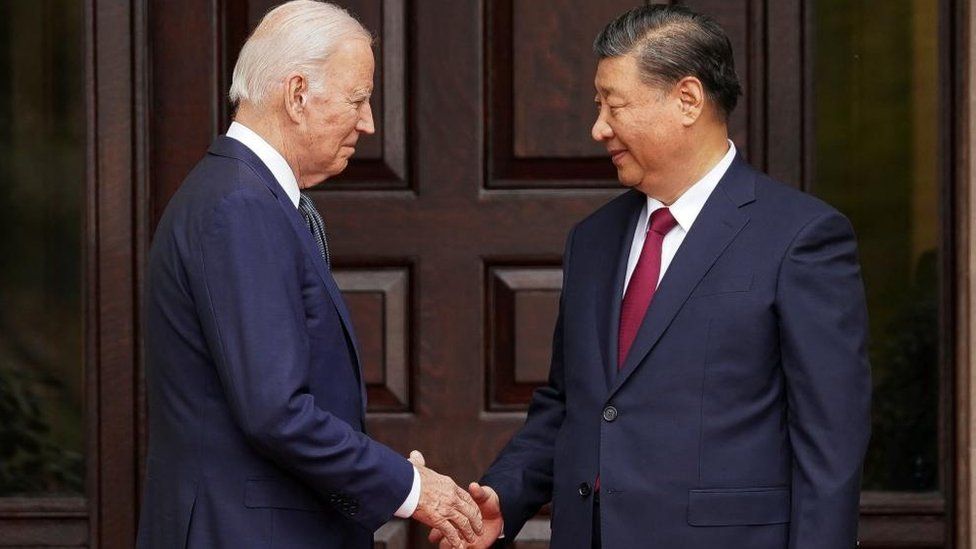
“Biden also invited Xi to join him for a walk around the estate and personally escorted him to his car [at the end of the meeting],” wrote People’s Daily.
Touting “extensive achievements” from the meeting, a Global Times editorial on Friday wrote: “We should make the cooperation list longer and the pie of cooperation bigger. Only by doing so can China-US relations be steered toward a healthy, stable, and sustainable direction.”
Chinese state media’s tone on the US had already shifted earlier this week – quite abruptly – in the lead-up to the long-awaited meeting. The usual anti-US rhetoric was paused as outlets instead pushed messages emphasising engagement and cooperation.
State news agency Xinhua on Monday published a story on Mr Xi’s friendships with American people. “The enduring strength of such amicable bonds has always served as a wellspring of vitality for bilateral ties, both in favourable and in challenging times,” said the piece, which was accompanied by a dozen pictures of Mr Xi’s visits to the US.
The sudden shift in tone was not lost on everyone: “Love or hate – the difference is just a moment,” a user wrote on Chinese social media platform Weibo.
Others were posting scene-by-scene updates from the meeting, with several hashtags related to it trending throughout the day.
The hashtag “the US reiterates it doesn’t support Taiwan independence” dominated Weibo for several hours. Other hashtags highlighted engagements between the two leaders. Users seemed excited over personal details such as Mr Xi being presented a Golden State Warriors’ jersey, Mr Biden walking Mr Xi to his made-in-China Hongqi car and describing the vehicle as “beautiful”.
“This [meeting] is a historic moment,” one Weibo user wrote, while another struck a cautionary tone: “I hope the US can act on their words.”
Some reacted with disbelief and amusement to Mr Biden’s “dictator” remark, although it was swiftly cut from official broadcasts within China.
“If he said ‘Xi is China’s emperor’ Xi would have loved it,” another user quipped on X, which is banned in China.
This video can not be played
To play this video you need to enable JavaScript in your browser.
Related Topics
-
-
6 November
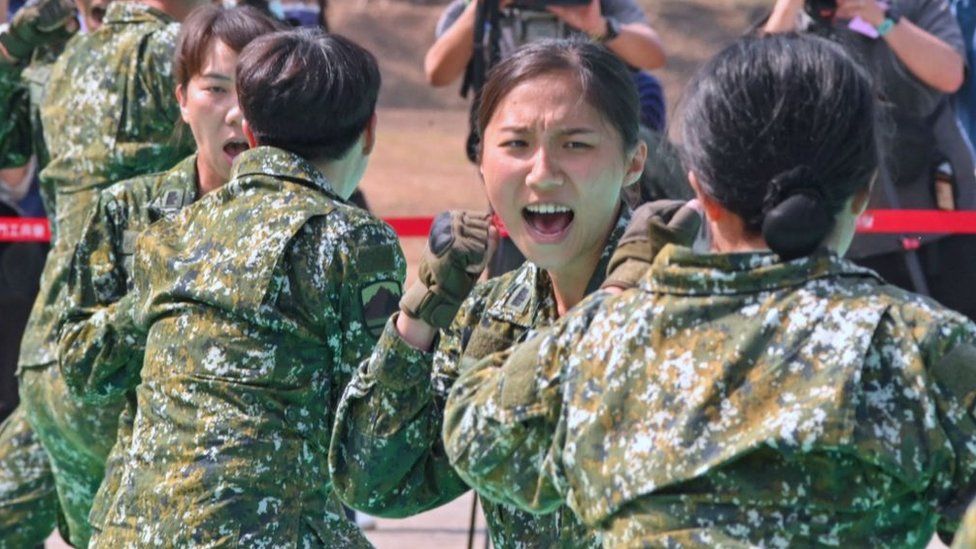
-
School Strike 4 Climate: Australian students with ‘sick note’ demand climate action
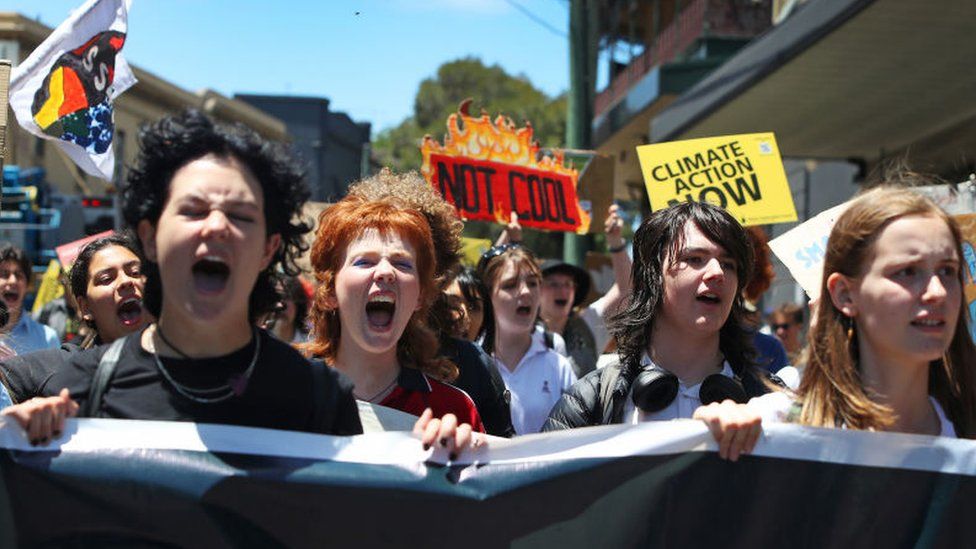 Getty Images
Getty ImagesThousands of Australian students have walked out of class to attend School Strike 4 Climate rallies, backed by a “sick note” from “climate doctors”.
Signed by three prominent scientists, it concludes: “It is my recommendation that they take a sick day to protest for a sick planet.”
The students called for greater climate action, as the country faces another summer with natural disasters.
However some state education officials said schools will not accept the note.
Penned by Dr David Karoly, Dr Nick Abel and Dr Lesley Hughes, the letter was available online for students to download.
It said they were unfit to attend school because of “increased anxiety” around government inaction, “elevated stress” due to the impact of climate change, and “feelings of despair” about their future.
The note is not a formal medical certificate, and education departments in New South Wales and Victoria said it will not be accepted in their schools.
The Minister for Education Jason Clare also said students should not be at the Friday strike. “I want our kids to be passionate, I want our kids to care about democracy and I want our kids to care about the future, but I also want our kids at school,” he said.
But students who attended the protests across nine cities said the government’s response demonstrated a failure to take their concerns seriously.
“[They are] throwing our future under the bus by approving new coal and gas [projects] in Australia,” year 10 student Joey Thompson told the Australian Broadcasting Corporation in Melbourne on Friday.
In Sydney, protesters chanted “shame” outside the office of Environment Minister Tanya Plibersek.
One 16-year-old, Min Park, told the Australian Associated Press she was striking because of Ms Plibersek’s approval of new coal and gas projects.
“She is listening to the fossil fuel lobby instead of doing her job and taking responsibility to protect the health of the planet,” she said.
Australia has long faced international criticism for being slow to respond to the threat posed by climate change.
While the Labour government led by Anthony Albanese promised greater action to halt climate change when elected in May 2022, experts say Australia is still not keeping pace with key allies like the US and the UK.
Originating in Sweden, School Strike 4 Climate is an international movement of students who skip classes on Friday to press for political action on climate change.
The Friday rallies are the 11th held in Australia, and the largest since 2019 when an estimated 300,000 people turned out across the country.
They come after former diplomat and public servant Gregory Andrews was forced to end a hunger strike outside Parliament House in Canberra. Mr Andrews had refused to eat until the government declared a climate emergency, but was taken away by an ambulance on Friday morning.
Related Topics
-
-
19 September

-
-
-
7 September
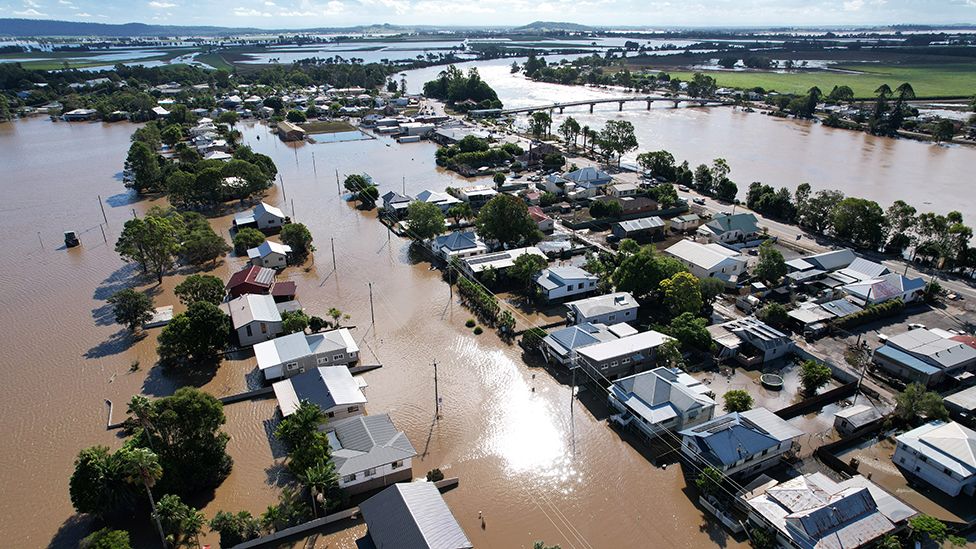
-
David McBride: Australian war crimes whistleblower pleads guilty
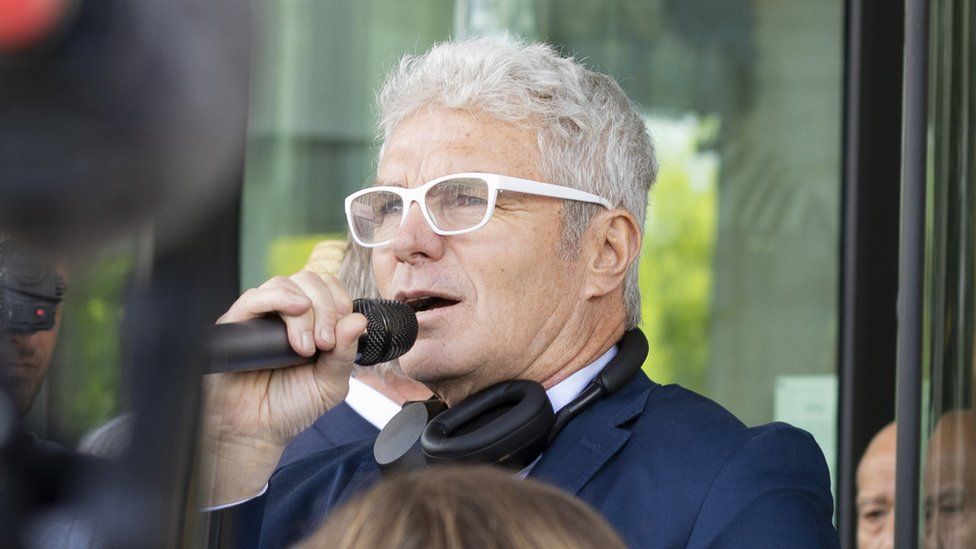 Amanda Smith
Amanda SmithA whistleblower who helped expose allegations of Australian war crimes in Afghanistan has pleaded guilty to leaking classified information.
David McBride was due to face trial next week, but changed his plea after a legal ruling scuppered his defence.
McBride – an ex-military lawyer – said he felt a moral duty to speak up after his internal complaints were ignored.
A landmark inquiry later found evidence that Australian forces had unlawfully killed 39 Afghans during the war.
McBride admits he gave troves of documents to the Australian Broadcasting Corporation (ABC), because he was concerned about what he then thought was the “over-investigation” of troops, the court heard.
He pleaded guilty on Friday to three charges of stealing and unlawfully sharing secret military information.
The information he provided underpinned a series of reports in 2017 called The Afghan Files, which gave unprecedented insight into the operations of Australia’s elite special forces in Afghanistan, and contained allegations of war crimes.
McBride was arrested in 2019, and initially faced five charges, including charges of theft of Commonwealth property, breaching the Defence Act and unauthorised disclosure of information.
He had intended to argue his disclosure was protected by whistleblower safeguards in Australia. But his legal team say they were forced to withdraw that defence after much of their arguments were ruled to endanger national security.
After failed attempts to convince Attorney General Mark Dreyfus to intervene and drop the prosecution – as Mr Dreyfus did in the case of fellow whistleblower Bernard Collaery last year – McBride then tried to argue that he had a duty to leaking the documents, because doing so was in the public interest.
After several days of pre-trial argument, a judge rejected the argument and ruled that they could not be put to a jury.
His defence lawyer Mark Davis said this would have dealt his defence a “fatal blow”, with McBride eventually entering a guilty plea.
He is expected to be sentenced early next year.
Related Topics
-
-
14 July 2022
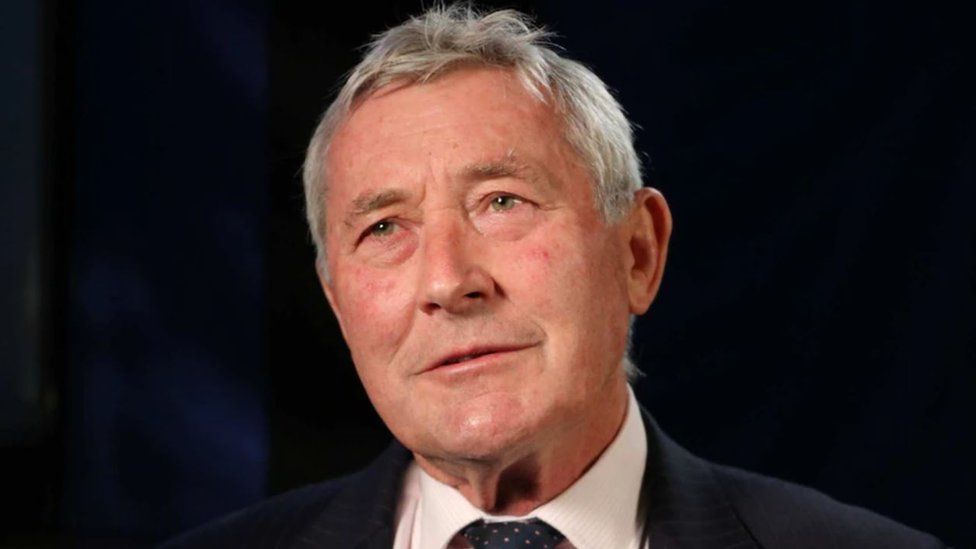
-
-
-
19 November 2020

-
APEC economies need to invest in new sustainability technologies: PM Lee

Besides official APEC business, global leaders are taking the opportunity to meet face-to-face during the APEC week, with US President Joe Biden and Chinese President Xi Jinping concluding high-stakes talks on Wednesday.
Leaders from the Indo-Pacific Economic Framework for Prosperity (IPEF) also met and signed a number of agreements ranging from clean energy, supply chain resilience and anti-corruption measures.
At the summit, it further launched a dialogue on critical minerals to foster closer collaboration on strengthening IPEF critical mineral supply chains.
IPEF, a group of 14 nations including Singapore, was established by Mr Biden’s administration to bolster economic engagement with Asia after former president Donald Trump quit a regional trade pact in 2017. It was first launched in Tokyo in May last year.
However, the 13 IPEF members involved in trade talks, excluding India, did not come to a deal at this APEC. Members could not agree on improving labour and environmental standards or compliance, people briefed on the talks said.
In a statement on Thursday, IPEF leaders said that they have made progress on and continue to work towards a “mutually beneficial Trade Pillar outcome” benefitting all segments of society.
At an IPEF meeting on Thursday, Mr Lee said that he welcomes progress on the IPEF trade deal.
“Trade is the lifeblood of the global economy. And the trade pillar is an integral part of the IPEF agreement and of US’ economic and strategic engagement with the region,” he said.
“But developing new and creative approaches in trade policy is not easy, and it takes time in order to carefully work through sensitive areas and to choose the best moment to commit the deal.
“Therefore, we look forward to further progress in the negotiations, as well as some tangible cooperation next year.”
Singapore will continue to work closely with partners to implement the IPEF agreements and initiatives, he said.
“The IPEF should continue to be open, inclusive and flexible, including towards new members,” said Mr Lee.
MyEg, Yayasan Chow Kit partner to prepare youth for the Web3 era
Youth gained exposure to digital skills & basic AI knowledge
Workshop aims to enhance individuals’ digital skills for improved career prospects
MY E.G. Services Berhad (MyEG) has collaborated with Yayasan Chow Kit (YCK) to foster digital inclusivity for marginalised youth in and around Chow Kit area in Kuala Lumpur.
In a statement, the leading…Continue Reading
Thai army awaits approval for repatriation of 41 Thais
Myanmar’s interrogation of 41 Thais has ended, says Thai army
PUBLISHED : 17 Nov 2023 at 12:36
UPDATED : 17 Nov 2023 at 14:29

CHIANG RAI: A commander of Tachileik in Myanmar has informed Thailand that the interrogation of the 41 Thais rescued from illicit businesses in Laukkaing township has concluded, and their repatriation is expected to be approved within the next few days, according to the Thai army.
The army reported on a meeting between Col Nathee Thomsen, commander of the Thap Chao Tak Taskforce of the Pha Muang Force, and Col Thura Zaw Lwin Soe, tactical operation commander of Tachileik, at the customs checkpoint in Tachileik on Friday. The Thai side wanted to discuss the reasons behind the delay in repatriating the 41 Thais and find ways to facilitate the process.
During the meeting, Col Nathee was informed that Myanmar authorities will likely approve their repatriation within the next few days.
After receiving approval, the 41 Thais would be immediately transported to the Tactical Operation Command in Tachileik, a border town across from Mae Sai district in Chiang Rai province. There, the group would be received by Col Nathee.
Earlier on Friday, Col Nathee said that the Thai side is ready to fully cooperate with Myanmar to ensure their safe repatriation.
He said that the 41 Thais had travelled the furthest from Laukkaing towards the Thai border in Chiang Rai province. They were held in Kengtung of Shan State, which is only a four-hour drive to Tachileik. The group arrived in Kengtung late Wednesday night.
He said that the Thai people were receiving good care from the Myanmar military. However, Myanmar authorities sought to question them regarding their entry into Laukkaing, which borders China and is known for illicit activities.
Col Nathee quoted Myanmar as earlier saying that upon the completion of the process concerning the Thai returnees, Thai officials could conveniently drive vehicles into Tachileik to pick them up.
The 41 Thais, comprising 23 men and 18 women, were among 162 Thais rescued from Laukkaing in the self-administered Kokang zone of Shan State.

Col Nathee Thimsen, commander of Thap Chao Tak ad hoc unit, speaks to reporters at the 37th Military Circle in Muang district of Chiang Rai on Friday morning. (Photo supplied)

